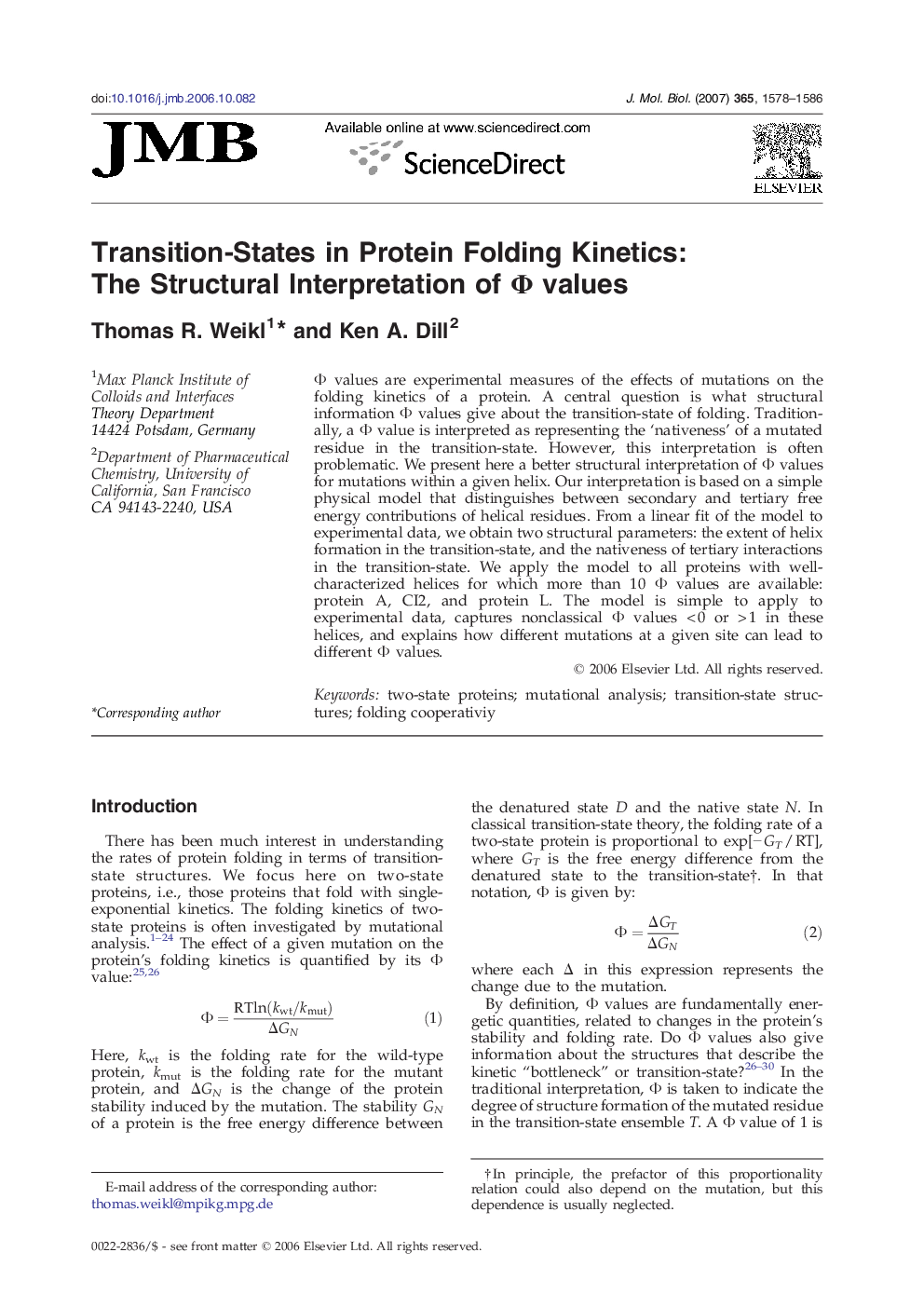| Article ID | Journal | Published Year | Pages | File Type |
|---|---|---|---|---|
| 2188802 | Journal of Molecular Biology | 2007 | 9 Pages |
Φ values are experimental measures of the effects of mutations on the folding kinetics of a protein. A central question is what structural information Φ values give about the transition-state of folding. Traditionally, a Φ value is interpreted as representing the ‘nativeness’ of a mutated residue in the transition-state. However, this interpretation is often problematic. We present here a better structural interpretation of Φ values for mutations within a given helix. Our interpretation is based on a simple physical model that distinguishes between secondary and tertiary free energy contributions of helical residues. From a linear fit of the model to experimental data, we obtain two structural parameters: the extent of helix formation in the transition-state, and the nativeness of tertiary interactions in the transition-state. We apply the model to all proteins with well-characterized helices for which more than 10 Φ values are available: protein A, CI2, and protein L. The model is simple to apply to experimental data, captures nonclassical Φ values < 0 or > 1 in these helices, and explains how different mutations at a given site can lead to different Φ values.
